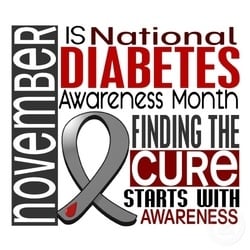Diabetes contributes to over 230,000 U.S. deaths per year. However, many people with type 2 diabetes are not aware they have the disease and may already have developed various health complications associated with it.
Non-Modifiable Risk Factors for Type 2 Diabetes
There are a number of risk factors that increase a person's risk for developing pre-diabetes and, ultimately, type 2 diabetes. Some of these characteristics are beyond a person's control, such as:
- Family history
If you have a blood relative with diabetes, your risk for developing it is significantly increased. Map out your family history tree (PDF) and take it to your doctor to find out what it means for you.
- Race or ethnic background
If you are of African-American, Asian-American, Latino/Hispanic-American, Native American or Pacific Islander descent, you have a greater likelihood of developing diabetes.
- Age
The older you are, the higher your risk. Generally, type 2 diabetes occurs in middle-aged adults, most frequently after age 45. However, health care providers are diagnosing more and more children and adolescents with type 2 diabetes.
- History of gestational diabetes
If you developed diabetes during pregnancy, you are at increased risk.
Modifiable Risk Factors for Type 2 Diabetes
While some things that contribute to the development of diabetes are beyond a person's control, there are also a number of modifiable risk factors. By making healthy changes in these areas, people can reduce their risks or delay the development of diabetes and improve their overall quality of life.
- Overweight/obesity
Being overweight puts you at a higher risk of developing diabetes. Losing five to seven percent of your body weight can cut your risk of developing pre-diabetes in half, and your risk decreases even more as you lose more weight. Learn how to manage your weight.
- Physical inactivity
Along with overweight/obesity, physical inactivity ranks among the top modifiable risk factors for pre-diabetes and type 2 diabetes. Achieving at least 150 minutes per week of moderate-intensity aerobic physical activity or 75 minutes per week of vigorous-intensity aerobic physical activity or a combination of the two with muscle-strengthening at least 2 days per week is important for your overall cardiovascular health.
- High blood pressure (hypertension)
In addition to causing damage to the cardiovascular system, untreated high blood pressure has been linked to the development of diabetes. Learn more about high blood pressure and how to control it.
- Abnormal cholesterol (lipid) levels
Low HDL "good" cholesterol" and/or high triglycerides can increase the risk for Type 2 diabetes and cardiovascular disease. A healthy eating plan, sufficient aerobic physical activity, and a healthy weight can help improve abnormal lipids. Sometimes medications are necessary.
.jpg)




